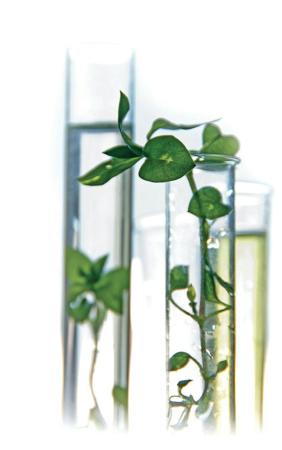The Science of Scent: Where Chemistry, Biology, and Creativity Meet
Scent is more than a sensory experience—it's a fusion of chemistry, biology, and emotional memory. Every breath we take draws in volatile molecules that trigger olfactory receptors, translating chemical information into biological signals the brain can interpret. With the ability to detect over one trillion scent combinations, our sense of smell is deeply intertwined with emotion and memory.
The Origins of Perfumery: Ancient Chemistry and Art
The history of fragrance is rooted in ancient science. The earliest known chemists were female perfumers in Mesopotamia, such as Tapputi-Belatekallim and the partially named ( )ninu, who mastered the art of extracting aromatic compounds from fruits, flowers, herbs, and resins. Their work laid the foundation for modern chemistry and perfumery.
Synthetic Chemistry Revolutionizes Fragrance
In the 19th century, breakthroughs in organic chemistry—such as Friedrich Wöhler’s synthesis of urea—marked a turning point. Synthetic molecules like vanillin (a key fragrance compound) were developed, giving rise to the modern perfume industry. Iconic scents like Guerlain's “Jicky” combined natural and synthetic ingredients, transforming fragrance creation into a new art form.
Biotechnology and Cultured Fragrance Ingredients
Today, biotechnology is reshaping the fragrance industry. Biological engineers are using DNA sequencing to identify the genes responsible for scent production in nature. These genes are introduced into microorganisms like yeast, which ferment sugars into desired aromatic compounds—a process called microbial fermentation.
Notable cultured ingredients produced this way include:
Clearwood and Ambroxa
Vanillin, valencene, and nootkatone
Sustainable lactones
These bioengineered fragrances offer sustainable sourcing, lower environmental impact, and unique scent profiles.
Advantages of Biotechnological Fragrance Production
Cultured fragrance ingredients offer several key benefits:
Sustainable and scalable ingredient sourcing
Reduced reliance on endangered or rare natural resources
Cost-effective production
New creative possibilities for perfumers
Clearwood, for instance, won the SEPAWA Innovation Award in 2015 for its sustainability, versatility, and olfactive uniqueness.
Bridging Science and Art: Creative Frontiers in Fragrance
Biotechnology isn’t just about efficiency—it’s about innovation at the intersection of science and creativity. Collaborations between artists and scientists are driving the next wave of fragrance design:
1. Reviving Extinct Flowers Through DNA
Advances in DNA extraction and sequencing now allow researchers to identify scent-producing genes from extinct plants. These genes can be introduced into yeast to recreate long-lost floral scents—blending historical science with artistic interpretation.
2. Living Deodorants and Skin Microbiome Fragrance
Researchers in Paris engineered underarm skin bacteria to neutralize body odor. Future developments may see these microbes modified to produce pleasant fragrances directly on the skin—ushering in a new era of skin-personalized scent.
3. Swallowable Perfume: A Futuristic Scent Delivery System
Concept artist Lucy McRae imagined “Swallowable Parfum,” where fragrance capsules are digested and excreted through the skin. While still a conceptual artwork, this vision has sparked real scientific inquiries into how diet and chemical compounds affect body scent.
Conclusion: A New Era of Fragrance Innovation
The fragrance industry is evolving. Through biosynthesis and microbial fermentation, perfumers now have access to sustainable, customizable scent molecules. Coupled with collaborations between biologists and artists, we are entering a new age where scent design is not only sustainable and efficient—but also profoundly creative and emotionally resonant.
As biology, chemistry, and art converge, the future of fragrance is not just about smelling good—it’s about redefining how we express identity, memory, and imagination through scent.

